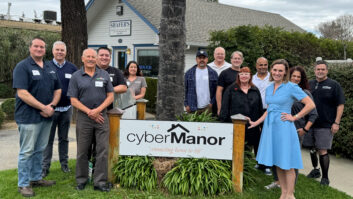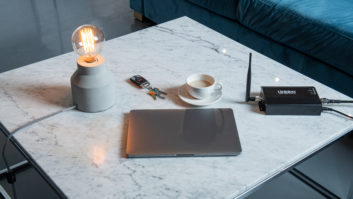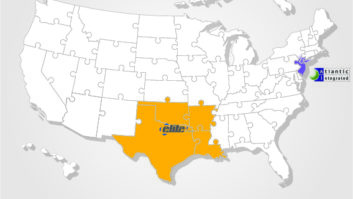Recurring monthly revenue (RMR) has been a hot topic post-CEDIA 2016. Jason Griffing called out the Birth of the RSM Category in a previous Residential Systems article, and the momentum of the topic has continued in both the CEDIA Online Community (cedia.net/community) and across the industry.
Wondering where to start?

That contract is the basis of recurring monthly revenue, and it hinges on service, first and foremost. The gear is secondary.
And that may be one of the reasons why RMR has been a somewhat tougher sell in the CEDIA channel. The notion that issues of networking and interoperability will create the need for ongoing service is a high hurdle. The client, after all, expects the stuff you installed to work exactly the same way every time, software updates be damned.
But 2016 isn’t just a new era in home technology–it’s a new universe. Exhibit A: CEDIA teaches a three-day, hands-on boot camp dedicated to advanced networking. IoT, as we learned dramatically when the Mirai botnet took down Dyn domains not too long ago, can be a fragile thing.
Ongoing digital security, monitoring, troubleshooting–these are things that can be monetized. Still, for residential integrators, RMR accounts for only about two percent of their annual take. (You’ll see all those numbers this month when CEDIA drops the Size and Scope Research report.)
So how does one make RMR work for their business?
Big Hits and False Starts
Joey Kolchinsky, who went on to found OneVision Resources, first approached the idea of RMR by forming what was effectively “The Joey Club”.
“In 2008-2010, I had a group of clients who were demanding for me to be available 24/7, respond instantly, and keep things simple,” he explained. “In 2008, I charged $300 a month and then I would bill hourly on top of that.”
And as Kolchinsly noted during a panel session at CEDIA 2016, that service started as an IT management service. From there, he “backed into” the industry and became an integrator, eventually managing personal and home technology for his clients. In 2015 he pivoted OneVision and built a service platform, offering its “Instant Triage” service directly to integration firms. Client having problems? A number connects to OneVision’s bank of phones, and they respond using the name of your firm in 30 minutes and work it out. Premium services can add to the RMR generation.
There are also integrators who’ve built their own RMR programs through trial and error. Residential Systems writer and Livewire owner Henry Clifford, after implementing an Ihiji Invision system, changed his approach to selling the service and saw truck rolls to sites with Invision drop by a staggering 90 percent; systems like these can fix things remotely.

Ihiji’s Invision Mobile App enables additional RMR capabilities.
There’s an App for That
SnapAV is another manufacturer committed to RMR solutions. Kenny Kim, category manager for the company’s OvrC/OvrC Pro, explained the product: “OvrC allows our dealers to remotely monitor and manage SnapAV connected products (Araknis networking, WattBox power, and Luma surveillance),” he said. “OvrC Pro extends those capabilities to give dealers visibility and access to the entire network.”
In addition, SnapAV gives the dealer the ability to customize and provide an application called OvrC Home to their clients that enables them to resolve common issues instantly without having to call the dealer. This reduces the number of late-night calls dealers get while improving the experience for clients, according to the company.
The product was built for the need that SnapAV saw. “With the increasing complexity and frequency of the service calls taken by our dealers, a once-complimentary ‘customer service’ was going to soon diminish the dealer’s profitability,” Kim said.
The product was designed to reduce those margin-slashing trips to troubleshoot–and although the app’s a part of it, Kim’s quick to note that, “We developed OvrC Pro as a service enabler for the dealer, not as a product for the client.”
RMR from Day One
When asked about the pitch–ensuring that the integrator knows how to sell “Smart Home as a Service”–Kim echoed what others have said: Start that conversation out of the gate.
“I think the most important first step is to help dealers to understand and acknowledge how valuable their services and expertise are to the clients,” he said. “I’ve seen success from dealers who start the conversation early with their clients, educating them early on to the importance and benefits of having a service contract, even including it as a default in the proposal.”
Like everyone else who’s evangelizing for RMR solutions, Mike Maniscalco understands that firms have to adapt to changing market realities. “The industry is changing quickly and services are becoming a bigger part of a technology professional’s business,” he said. “We truly believe that for the industry to thrive and stay competitive, that dealers must find new revenue streams around service, and recurring revenue is an excellent model for this.”







